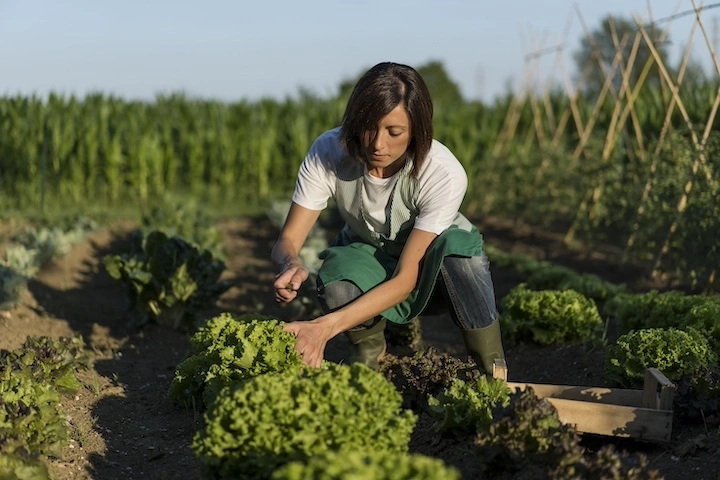
12 juin 2024
You dream of a bountiful vegetable garden and a healthy orchard, but insect pests and cryptogamic diseases are making your life difficult. What if the solution lies in your small bottles of essential oils? Indeed, these concentrated aromatic extracts, well-known for their wellness virtues, can also be precious allies to protect your crops naturally and ecologically.
Discover how to judiciously use essential oils to bid farewell to chemical pesticides and obtain beautiful, healthy, and flavorful harvests. Follow the guide!
Key takeaways from this article:
Here are the 3 main key points to remember about using essential oils to protect crops against pests and diseases:
• Essential oils are a natural and ecological alternative to chemical pesticides. Thanks to their insecticidal, fungicidal, and repellent properties, they effectively combat a wide range of pests and diseases in vegetable gardens and orchards.
• The best essential oils are Peppermint and Clove against insects, and Oregano and Savory against fungi. However, it is crucial to choose 100% pure and natural oils, use them cautiously by respecting dosages, and alternate them.
• When used in conjunction with other organic gardening methods, essential oils promote the obtainment of healthy, bountiful harvests without toxic residues, while respecting the environment and the garden's biodiversity.
Important note: this content is provided for informational purposes only as part of a bibliographic synthesis. Regulations concerning the use of natural extracts in agriculture are complex and evolve regularly. It is each farmer's responsibility to verify regulatory compliance before any use, particularly within the framework of organic certification. Landema, as a producer and supplier of pure natural extracts, cannot be held responsible for uses other than those mentioned on the official labels and technical documents of its products.
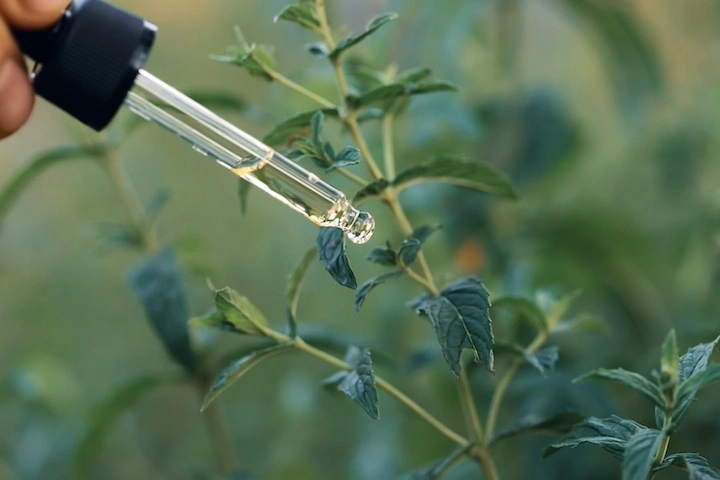
Essential oils, ultra-effective plant shields
1.1. A concentrate of active principles
Essential oils are obtained by steam distillation of aromatic plants. They contain, in concentrated form, the active molecules that naturally protect plants against bioaggressors. Notably, they contain:
• Terpenes with insecticidal and fungicidal properties
• Phenols that disrupt fungal development
• Aldehydes that repel insects
• Ketones that stimulate plants' natural defenses
This complexity confers them a broad spectrum of action and high efficacy at low doses.
1.2. An ecological alternative to pesticides
Unlike chemical treatments, essential oils are 100% natural, biodegradable substances that are non-toxic to the environment. They allow one to forgo synthetic pesticides while ensuring optimal crop protection.
Their judicious use helps restore balance to the garden's ecosystem by targeting pests without harming beneficial insects and pollinators - a gentler, more sustainable approach.
1.3. An asset for healthy, flavorful harvests
By helping reduce pest pressure, essential oils promote the vigorous growth of vegetables and fruits. You can thus harvest healthy, flavorful produce free of pesticide residues.
Moreover, certain essential oils possess invigorating properties that bolster plants' natural resistance, boosting crop yields and quality.
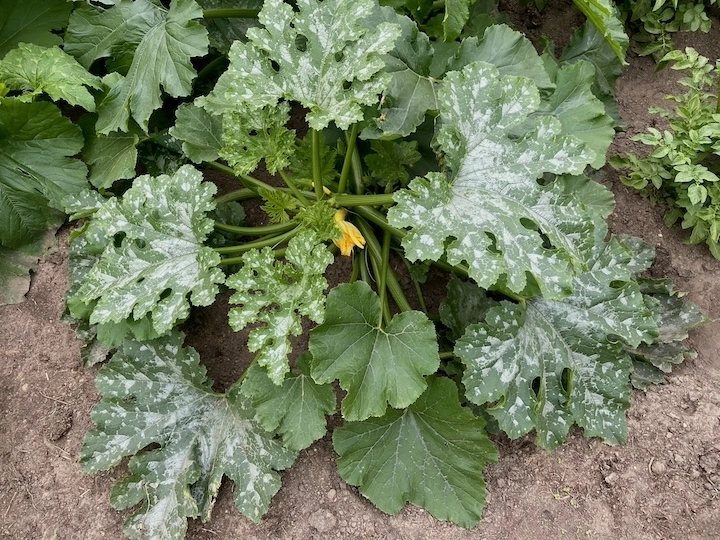
Spotlight on the best essential oils for organic gardeners
2.1. Against insects and mites
Many insects attack vegetable and fruit crops, such as aphids, whiteflies, mites, and Colorado potato beetles. Fortunately, some essential oils effectively repel them:
• Peppermint (Mentha x piperita), formidable against aphids, whiteflies, and mites
• Clove (Eugenia caryophyllus), with potent insecticidal properties
• True Lavender (Lavandula angustifolia), a broad-spectrum repellent
• Sweet Orange (Citrus sinensis), the ultimate weapon against insects with shells
• Geranium (Pelargonium graveolens), effective against whiteflies and mealybugs
Through diffusion or spraying, they disrupt pest behavior and durably deter them.
2.2. Against cryptogamic diseases
Downy mildew, powdery mildew, rust, leaf curl, and apple scab... Pathogenic fungi can wreak havoc in vegetable gardens and orchards. But some essential oils have interesting fungicidal properties:
• Oregano (Origanum vulgare) and Savory (Satureja montana), phenol-rich and highly effective essential oils
• Tea Tree (Melaleuca alternifolia), with a broad antifungal spectrum
• Clove (Eugenia caryophyllus), useful against powdery mildew and downy mildew
• Citrus fruits (Lemon - Citrus limon -, Sweet Orange - Citrus sinensis -, etc.), allies against sooty mold
Applied regularly, they inhibit spore development and disease spread.
2.3. To stimulate natural defenses
Finally, some essential oils act as plant defense stimulators (PDSs), reinforcing plants' resistance mechanisms against bioaggressors:
• Lemon Eucalyptus (Eucalyptus citriodora), with fortifying virtues
• Maritime Pine (Pinus pinaster), which sanitizes the environment
• Lemon (Citrus limon), a true plant booster
Used preventively, they help crops better defend themselves, complementing treatments.
You can further explore this topic by reading the article "Top 5 essential oils for abundant organic harvests".
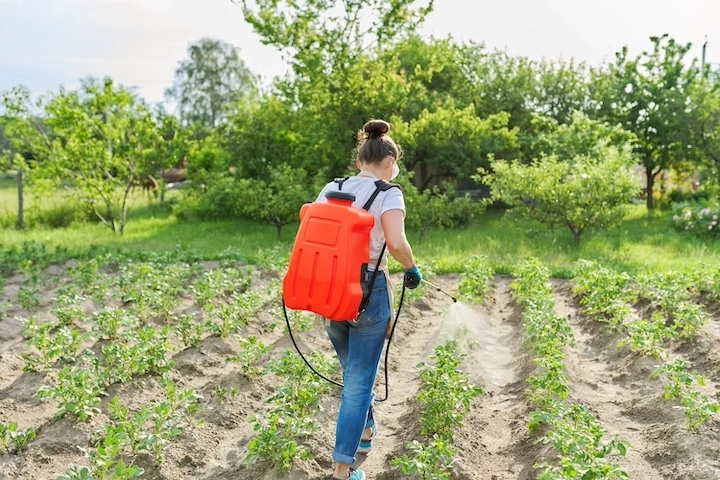
Usage instructions: best practices to adopt
3.1. Choosing quality essential oils
The quality of the essential oils is paramount to ensure their efficacy and safety. Opt for 100% pure and natural essential oils, derived from organic agriculture.
Beware of pre-mixed blends and inexpensive essential oils that may contain synthetic molecules. Instead, favor reputable suppliers capable of providing certificates of analysis and traceability for their products. Landema.com, a subsidiary of the family-owned Biolandes group and an online specialist in professional-grade essential oils directly from the producer, is an excellent choice.
3.2. Respecting dosages and dilutions
Highly concentrated in active principles, essential oils must always be diluted to avoid burning plants. Generally, mix 20 to 30 drops of essential oil in 1L of water with a bit of organic liquid black soap for proper emulsification.
As an alternative to black soap, one can also use Solubol®, a 100% natural dispersant for essential oils. It is recommended to test on a small part of the foliage before treating the entire plant. If in doubt, do not hesitate to seek professional advice.
3.3. Applying at the right time
For optimal efficacy, it is preferable to treat early in the morning on dry foliage, in calm weather with no rain forecast. Avoid the hottest, sunniest hours.
As a preventive measure, renew the application every 3 weeks or so. For curative treatment, apply at the first sign of symptoms and repeat if needed a few days apart.
3.4. Considering synergies
Essential oils can be used alone or combined for enhanced action. Certain blends prove particularly interesting:
• Oregano (Origanum vulgare) + Savory (Satureja montana) against downy mildew and powdery mildew
• Peppermint (Mentha x piperita) + Clove (Eugenia caryophyllus) against aphids and mites
• True Lavender (Lavandula angustifolia) + Geranium (Pelargonium graveolens) against whiteflies and mealybugs
Do not hesitate to alternate essential oils to prevent the development of resistance in bioaggressors.
3.5. Protecting oneself
As they are highly concentrated, essential oils can be irritating to the skin and mucous membranes. When preparing and applying them, be sure to equip yourself with gloves, goggles, and a mask.
Carefully wash your hands after handling and avoid touching your face. Store your bottles in a cool, dry place, out of reach of children.
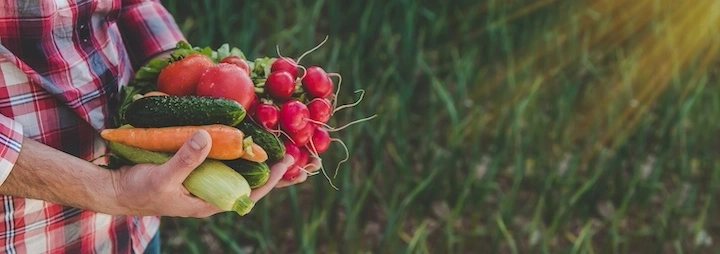
Testimonials from professionals convinced by essential oils
4.1. Eric, an organic market gardener in Devonshire
"For the past 5 years, I have been using essential oils on my tomato, zucchini, and salad crops. Each year, I conduct trials to find the best combinations.
Against downy mildew, my favorite blend is Oregano and Savory, applied three times during the season. For aphids, I alternate between Peppermint and Clove every two weeks.
Since switching to essential oils, I have regained healthy plants and no longer have to worry about chemical residues. The only downside is that I have to reapply frequently in case of rain. But the results are there, and my customers are delighted with the quality of the vegetables! »
4.2. Sophie, an arborist in Ledbury
"In my orchard of apple and pear trees, I have long struggled with scab and codling moth. Despite using copper and sulfur, I couldn't get rid of them. I was a bit skeptical at first, but three years ago, I decided to try essential oils.
I spray Sweet Orange essential oil from the beginning of flowering and reapply two or three times until harvest. I complement this with Clove essential oil diffusers in the foliage to disrupt the moths.
Even though I still need to refine my blends, I have already noticed a marked improvement in the health of my trees. And the best part is that I can taste the true flavor of the fruits again! »
Note: For ethical reasons, we would like to clarify that the testimonials from Eric in 4.1 and Sophie in 4.2 are fictional examples created to illustrate and bring the article to life. They are not based on any particular source but are the product of the editorial team's (documented) imagination, providing a concrete glimpse into the experiences that gardeners using essential oils might share.The goal here was to provide inspiring and credible testimonials, without being based on existing quotes. The rest of the article, however, is sourced from various links and documents that we can provide upon request.
For effective protection of your ecosystem
You will have understood it - essential oils have more than one trick in their bottle to help you protect your vegetable garden and orchard naturally and effectively. Insecticidal, fungicidal, invigorating... They are brimming with beneficial properties for the health of your crops.
By using them cautiously and sparingly, in conjunction with other gentle methods such as choosing resistant varieties, rotations, mulching, or plant teas, you will foster the balance of your ecosystem and the biodiversity of your garden. The keys to an abundant vegetable patch and a bountiful orchard!
So do not wait any longer to adopt these precious plant extracts and offer the best natural care to your plants. And if you have any doubts or questions, do not hesitate to seek guidance from a nature professional.
With essential oils, set your course for a garden in full bloom, naturally!
Items that could
interest
Our essential oils
will simplify your life
Your wishlist
You must be logged in to post a comment.
Login, or create an account
There is no comment for this article yet